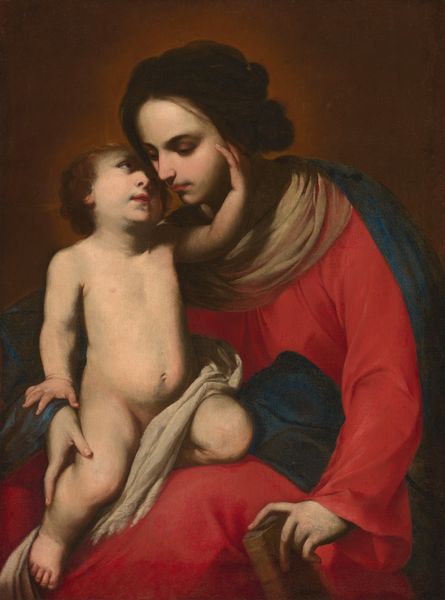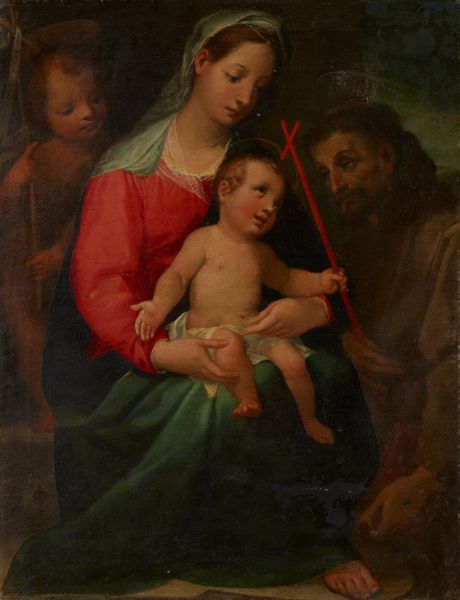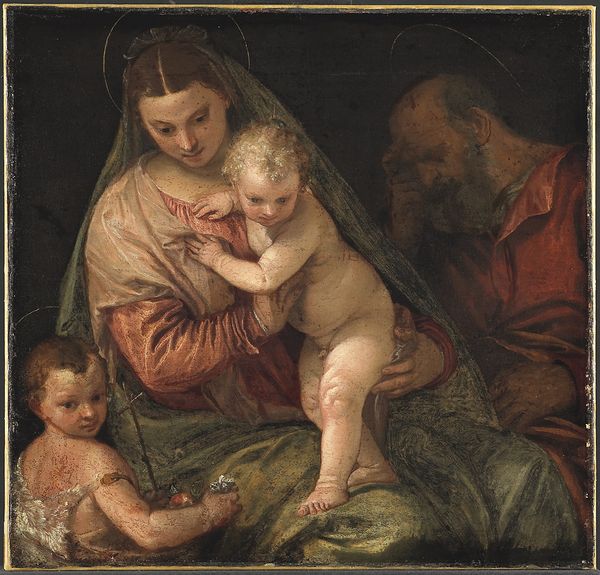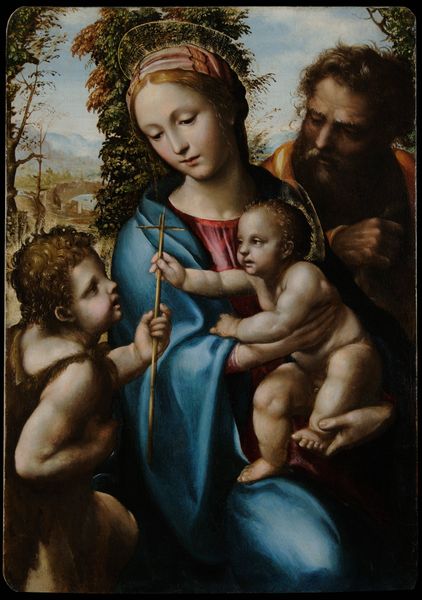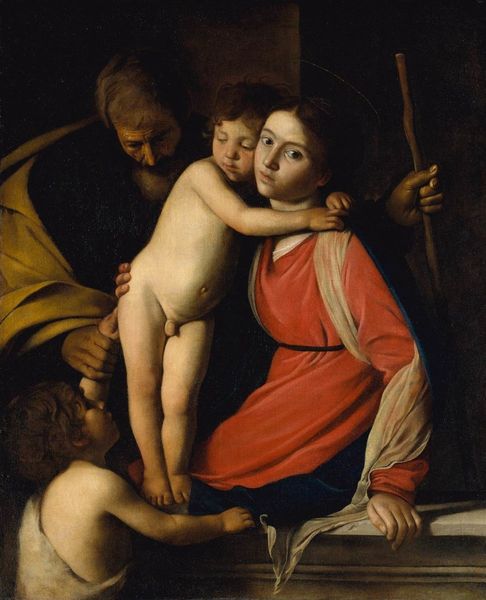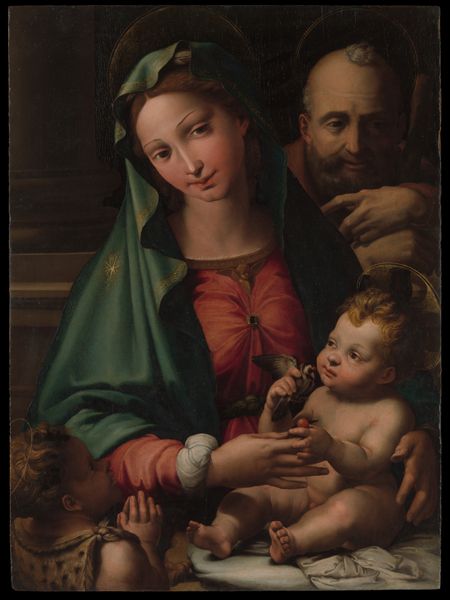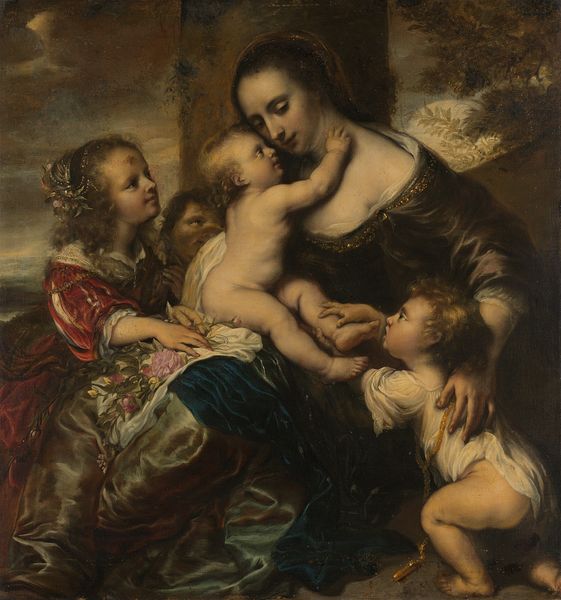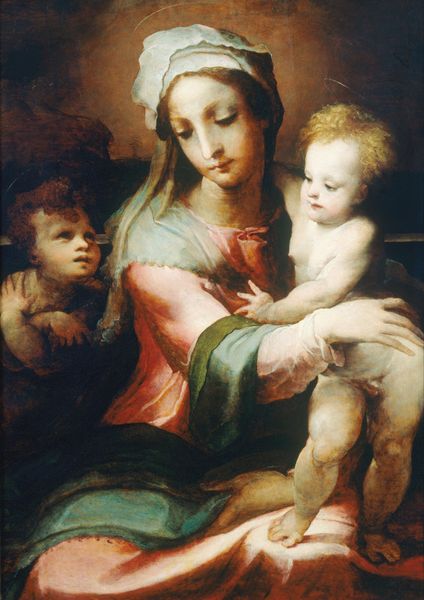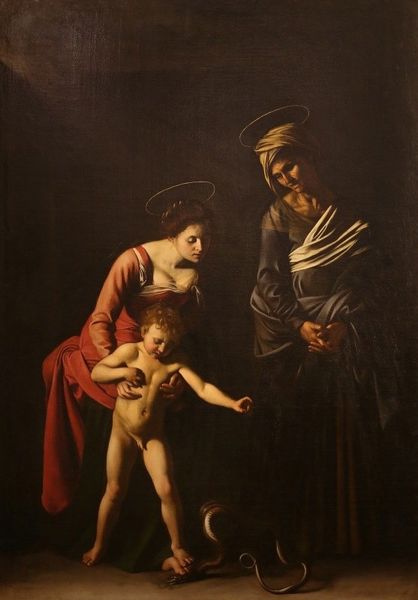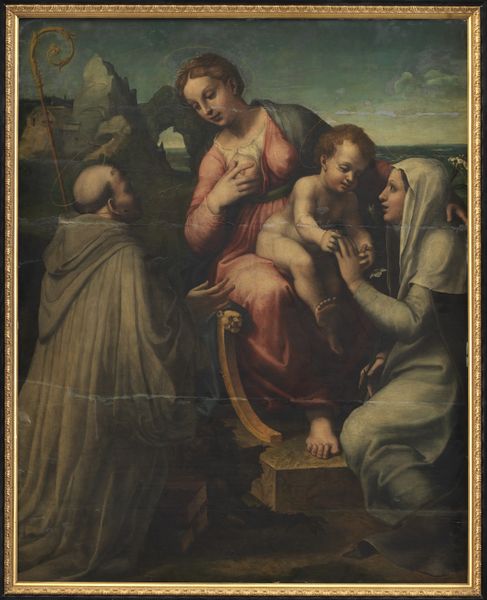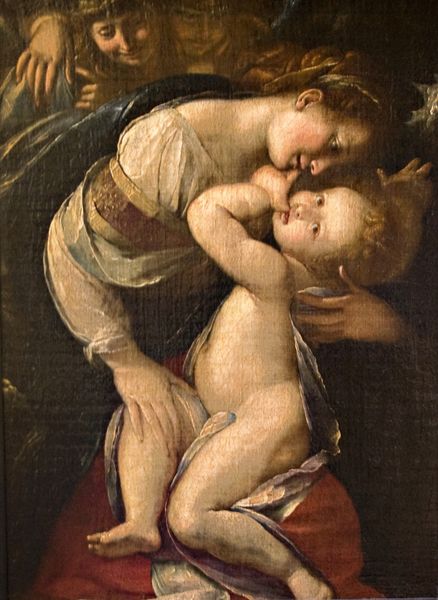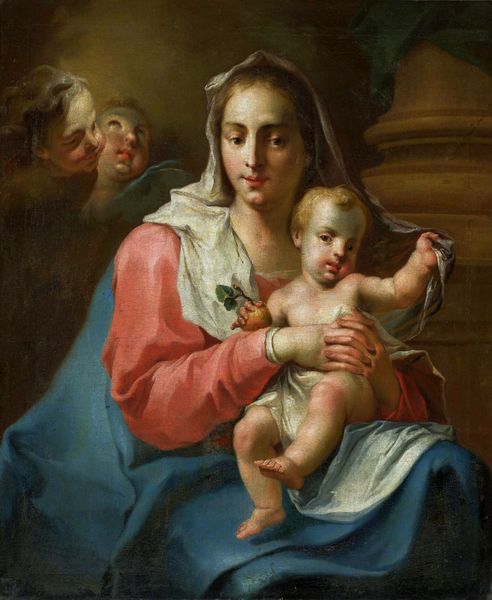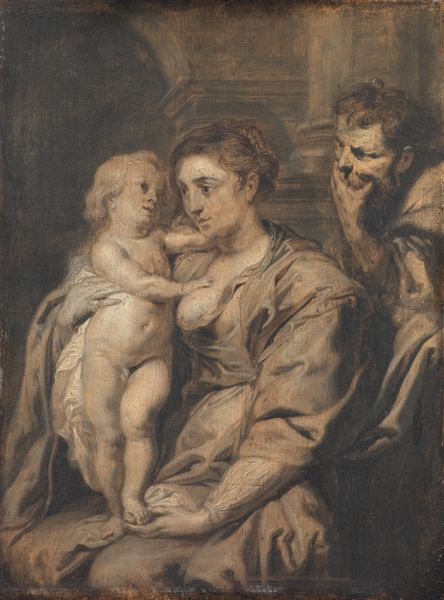
Saint Christopher Carrying the Infant Christ 1730s
0:00
0:00
painting, oil-paint
#
portrait
#
baroque
#
painting
#
oil-paint
#
figuration
#
oil painting
#
history-painting
#
portrait art
#
christ
Dimensions: 28 1/4 x 22 1/8 in. (71.8 x 56.2 cm)
Copyright: Public Domain
Curator: Standing before us is Giovanni Battista Piazzetta's oil on canvas, "Saint Christopher Carrying the Infant Christ," dating back to the 1730s. Editor: My immediate response is one of upward momentum. The tilted head of Saint Christopher and the gaze of the child create a diagonal pull, augmented by the dark palette that makes the skin and highlights almost incandescent. Curator: The composition undeniably directs the eye upward, doesn't it? Notice how Piazzetta uses the chiaroscuro effect, typical of the Baroque period, to not only add drama but also to sculpt the forms. The play of light and shadow creates a sense of weight, grounding the figures while also allowing for this perceived levitation. Editor: Right, it's this Baroque sensibility, steeped in Counter-Reformation theatrics. This isn't merely a devotional image, it’s a visual sermon meant to impress on viewers the profound implications of Christ’s incarnation and sacrifice through Saint Christopher. It’s interesting how the visual construction parallels Catholic dogma here. Curator: Absolutely, and the saint's wrinkled face, gazing towards heaven, conveys the spiritual burden and divine encounter. What is intriguing about this piece from a formal point of view is that we can find similarities with ancient artworks, while this composition clearly displays Baroque artistic conventions. The balance is well executed and there is attention to light, texture, and color as independent elements, all working in harmony to convey religious context. Editor: Indeed, looking closer at his role as protector—one sees how these figures played an important cultural and political part at the time. They reminded the population of certain ethical rules established by institutions like the church. Even the scale suggests this was meant for more than personal reflection—the image invites public veneration of its moral content. Curator: That interplay of spiritual intensity and representational intention does give us much to contemplate about the power of faith as mediated by art. Editor: Yes, seeing it anew reminds me about how our perception can be as shaped by the painting as it is by our knowledge about the world we live in.
Comments
No comments
Be the first to comment and join the conversation on the ultimate creative platform.
